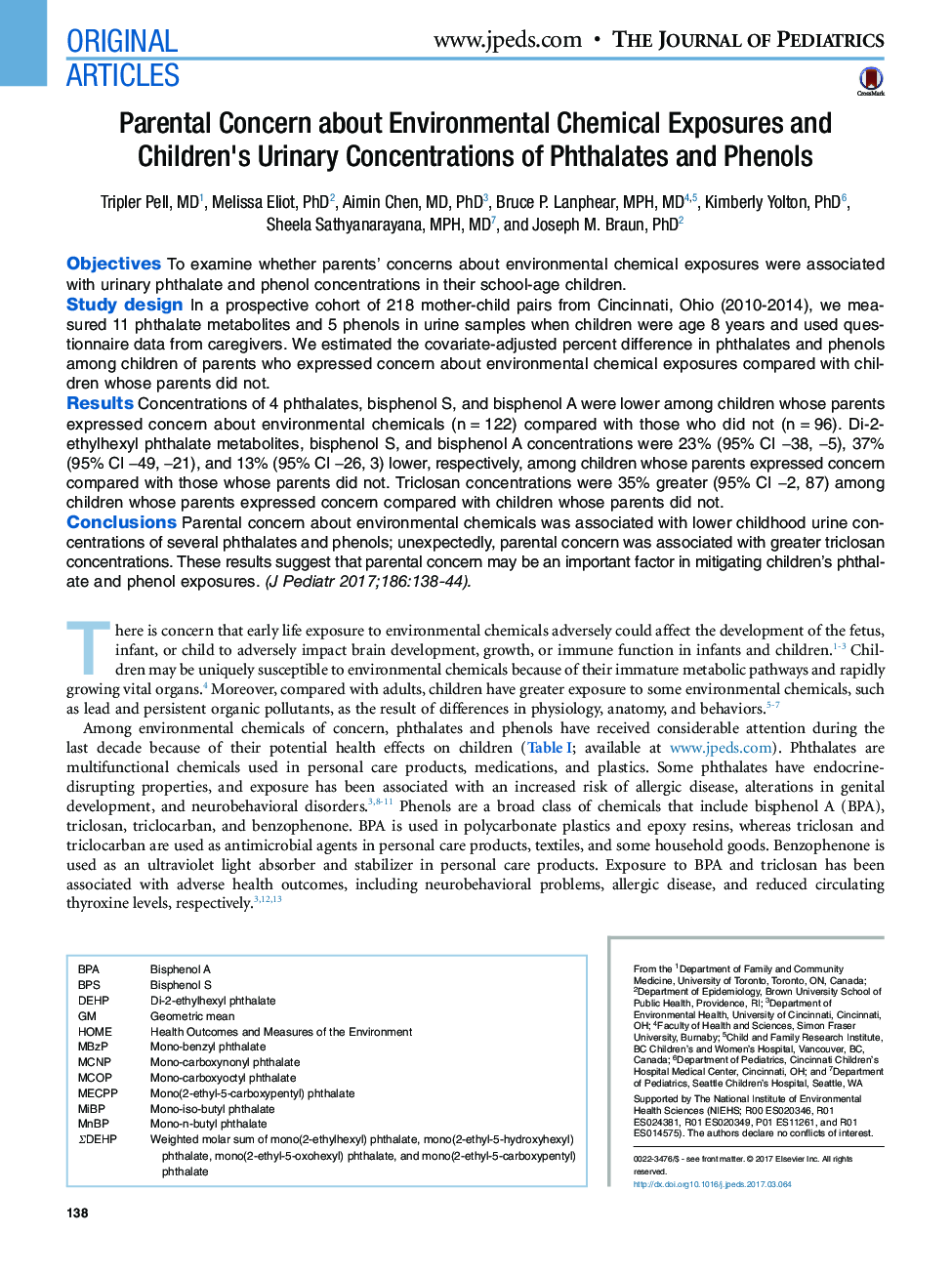| Article ID | Journal | Published Year | Pages | File Type |
|---|---|---|---|---|
| 5719454 | The Journal of Pediatrics | 2017 | 10 Pages |
ObjectivesTo examine whether parents' concerns about environmental chemical exposures were associated with urinary phthalate and phenol concentrations in their school-age children.Study designIn a prospective cohort of 218 mother-child pairs from Cincinnati, Ohio (2010-2014), we measured 11 phthalate metabolites and 5 phenols in urine samples when children were age 8 years and used questionnaire data from caregivers. We estimated the covariate-adjusted percent difference in phthalates and phenols among children of parents who expressed concern about environmental chemical exposures compared with children whose parents did not.ResultsConcentrations of 4 phthalates, bisphenol S, and bisphenol A were lower among children whose parents expressed concern about environmental chemicals (nâ=â122) compared with those who did not (nâ=â96). Di-2-ethylhexyl phthalate metabolites, bisphenol S, and bisphenol A concentrations were 23% (95% CI â38, â5), 37% (95% CI â49, â21), and 13% (95% CI â26, 3) lower, respectively, among children whose parents expressed concern compared with those whose parents did not. Triclosan concentrations were 35% greater (95% CI â2, 87) among children whose parents expressed concern compared with children whose parents did not.ConclusionsParental concern about environmental chemicals was associated with lower childhood urine concentrations of several phthalates and phenols; unexpectedly, parental concern was associated with greater triclosan concentrations. These results suggest that parental concern may be an important factor in mitigating children's phthalate and phenol exposures.
